
Figuring how long it takes an A380 to take off given a constant acceleration. Created by Sal Khan.
- Subject:
- Physical Science
- Physics
- Material Type:
- Lesson
- Provider:
- Khan Academy
- Provider Set:
- Khan Academy
- Author:
- Sal Khan
- Date Added:
- 06/13/2011

Figuring how long it takes an A380 to take off given a constant acceleration. Created by Sal Khan.
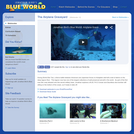
During World War Two, a fierce battle between American and Japanese forces on Kwajalein atoll left a trail of debris on the deep lagoon floor. This lagoon now has one of the largest collections of well-preserved aircraft in the world. In this video, as part of the first ever film crew allowed onto this secret military base, Jonathan explores a B-25, F4-U Corsair and Dauntless dive bomber still sitting on the bottom of the ocean, as if ready to take off. Please see the accompanying study guide for educational objectives and discussion points.
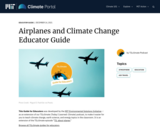
How much of an impact does air travel have on climate change? What can be done about it? Through a hands-on demonstration and a short literature review, students consider the impacts and future of aviation. With data, students consider why climate communicators and scientists focus on carbon dioxide. This guide is an extension of the TILclimate episode "TIL about planes."

This online set of activities help students learn properties of ocean waves, wind-wave relationships and properties of tsunamis.
(Note: this resource was added to OER Commons as part of a batch upload of over 2,200 records. If you notice an issue with the quality of the metadata, please let us know by using the 'report' button and we will flag it for consideration.)
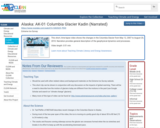
This short, time-lapse video shows the changes in the Columbia Glacier from May 12, 2007 to August 20, 2010. Narration provides general description of the geophysical dynamics and processes.

This video from First Alaskans Institute spotlights the Alaska Native community of St. Paul and its hands-on commitment to care for the land and animals on which it depends.
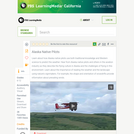
In this video adapted from Storyknife Productions, Alaska Native pilots share how they use traditional knowledge to read the landscape and predict the weather.
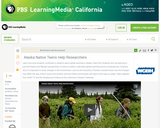
In this video adapted from KUAC-TV and the Geophysical Institute at the University of Alaska, Fairbanks, Alaska Native students contribute to research on how their environment is changing as a result of global warming.
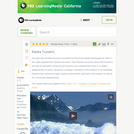
In this video adapted from Alaska Sea Grant, discover why multiple tsunamis resulted from the Great Alaska Earthquake of 1964.
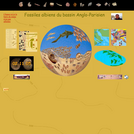
This illustrated guide to Albian (Cretaceous) fossils provides an extensive photo collection of fossils from the Anglo-Parisian basin. Additional information, high resolution photos and illustrations can be accessed by clicking the fossil icons located on the globe, the time scale or along the top of the page. Although the site is written in French, a non-French-speaking visitor will find this page easy to navigate and the photos well worth the visit. Fauna featured on this site include ammonites, nautiloids, belemnites, gastropods, crusteceans, echinoderms, marine vertebrates and corals.

In fantasy stories, charlatans in fancy robes promise to turn lead into gold. But real alchemists weren’t just mystical misers. They were skilled experimentalists, backed by theories of matter.
And they played a huge role in the development of knowledge about one of our fundamental questions: “what is stuff?”

Determine the concentration of an alcohol solution from its density.

Alcohol or ethanol fermentation, including yeast and its role in bread and wine production.

What comes to mind when you think of alcohol? Probably alcoholic drinks like beer or wine. But in organic chemistry alcohols are an important and versatile family of compounds. In this episode of Crash Course Organic Chemistry, we’ll use alcohols as a starting point to get other types of compounds like ethers, epoxides, and more!
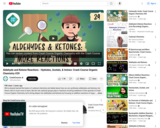
We’ve already learned the basics of carbonyl chemistry and talked about how we can synthesize aldehydes and ketones, but there’s still so much more to learn, like the role carbonyl groups play in reactions involving sedatives! In this episode of Crash Course Organic Chemistry we’re diving deeper into aldehydes and ketones by focusing on addition reactions of oxygen and nitrogen based nucleophiles. We’ll cover hydrates, acetals and hemiacetals, imines and enamines, and more!
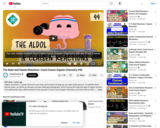
Organic chemistry is a great workout for your brain, and to keep its energy up, your brain needs glucose. To maintain blood glucose levels, our bodies go through a process called gluconeogenesis, which involves the important type of organic reaction we’re getting into today: aldol reactions! In this episode of Crash Course Organic Chemistry, we’ll learn what an aldol is, as well as how aldol reactions work and what they do. Plus we’ll learn about a similar reaction, Claisen condensation.
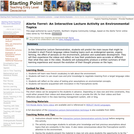
In this Interactive Lecture Demonstration, students will predict the main issues that might be included in short French language videos treating topics such as endangered species, organic farming, the effect of aerosols on the environment, pollution and sustainable development. They will then view short videos on the topics and reflect on how their prior assumptions meshed with reality.
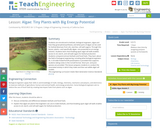
Students are introduced to biofuels, biological engineers, algae and how they grow (photosynthesis), and what parts of algae can be used for biofuel (biomass from oils, starches, cell wall sugars). Through this lesson, plants—and specifically algae—are presented as an energy solution. Students learn that breaking apart algal cell walls enables access to oil, starch, and cell wall sugars for biofuel production. Students compare/contrast biofuels and fossil fuels. They learn about the field of biological engineering, including what biological engineers do. A 20-slide PowerPoint® presentation is provided that supports students taking notes in the Cornell format. Short pre- and post-quizzes are provided. This lesson prepares students to conduct the associated activity in which they make and then eat edible algal cell models.

In this activity, students explore the basic living requirements of algae (phytoplankton)through hands-on experience and an interactive game. Students investigate what algal biofuels are, how they are made, where they can grow, and, most importantly, why this topic should be investigated. Algal biofuels are an emerging source of renewable energy.

This is a book containing over 200 problems spanning over 70 specific topic areas covered in a typical Algebra II course. Learners can encounter a selection of application problems featuring astronomy, earth science and space exploration, often with more than one example in a specific category. Learners will use mathematics to explore science topics related to a wide variety of NASA science and space exploration endeavors. Each problem or problem set is introduced with a brief paragraph about the underlying science, written in a simplified, non-technical jargon where possible. Problems are often presented as a multi-step or multi-part activities. This book can be found on the Space Math@NASA website.